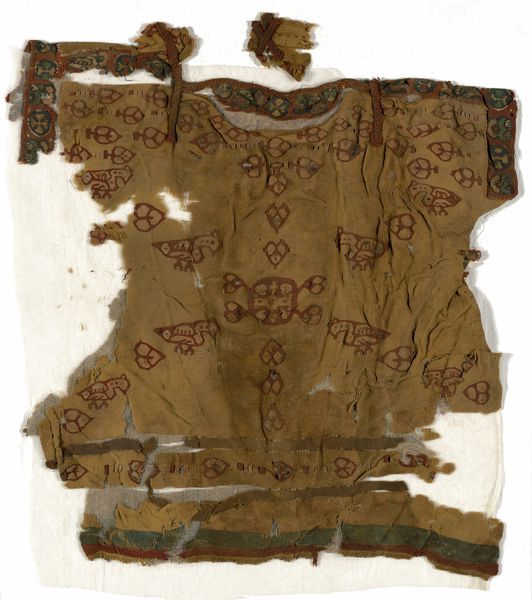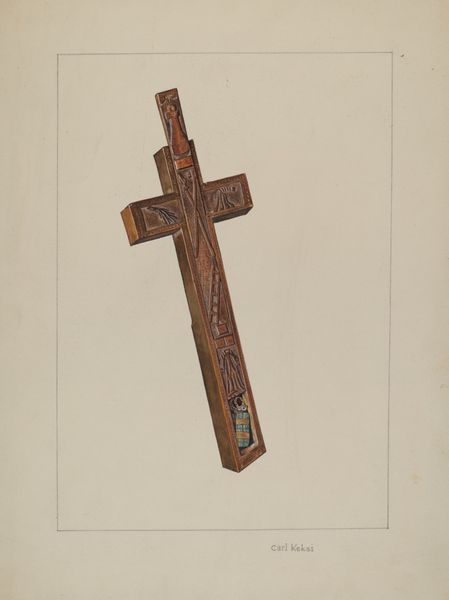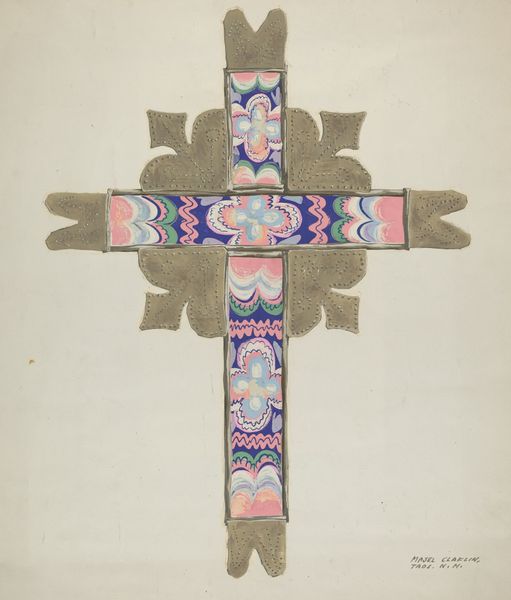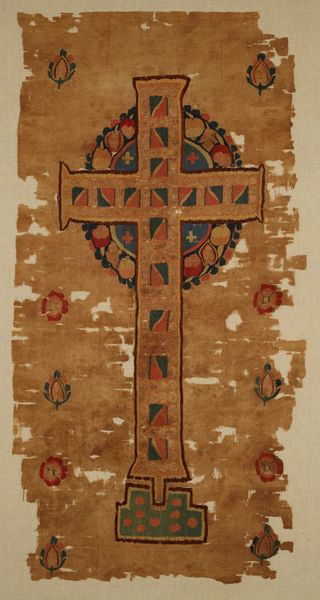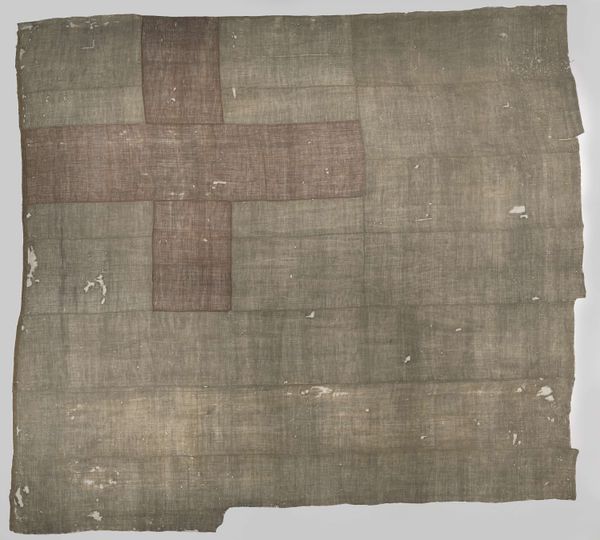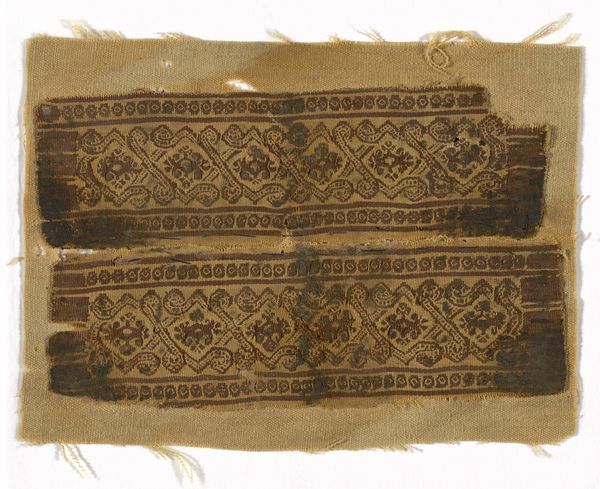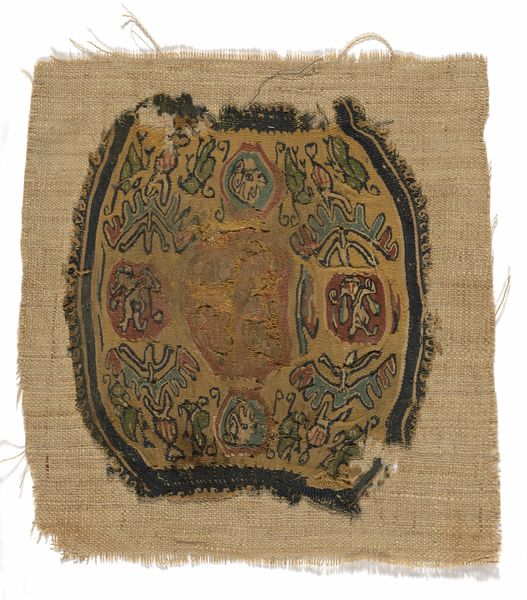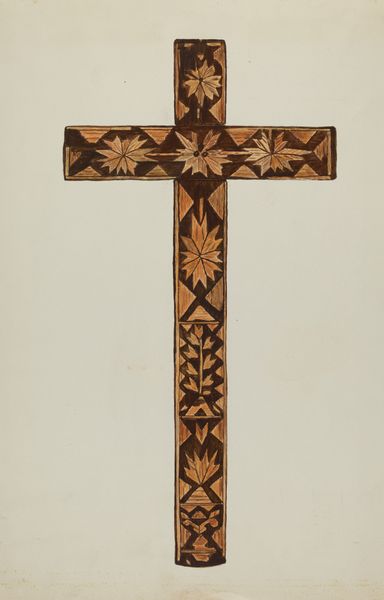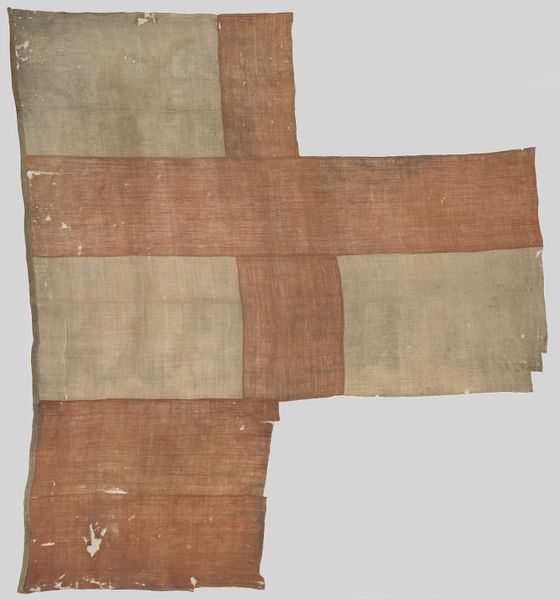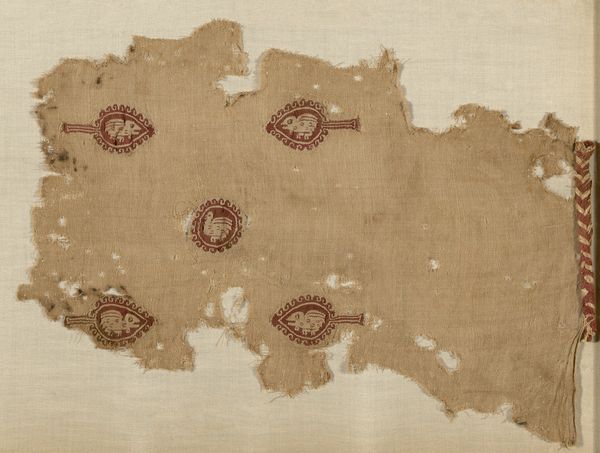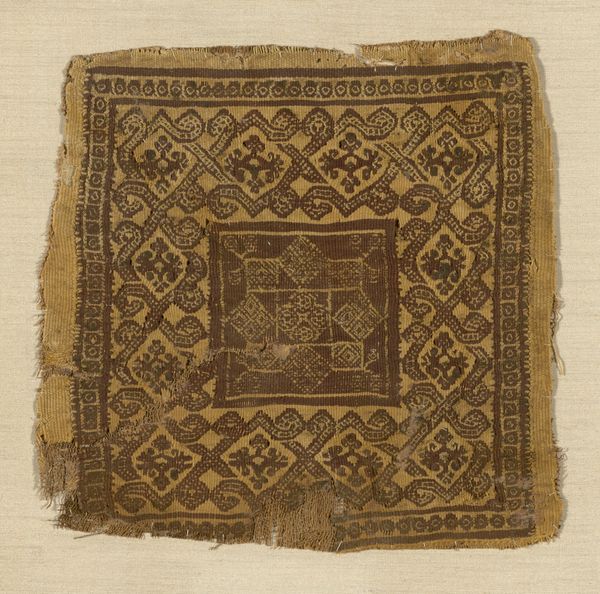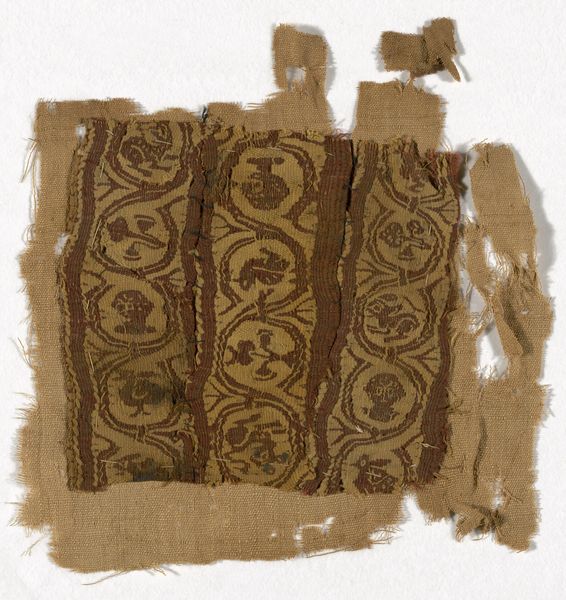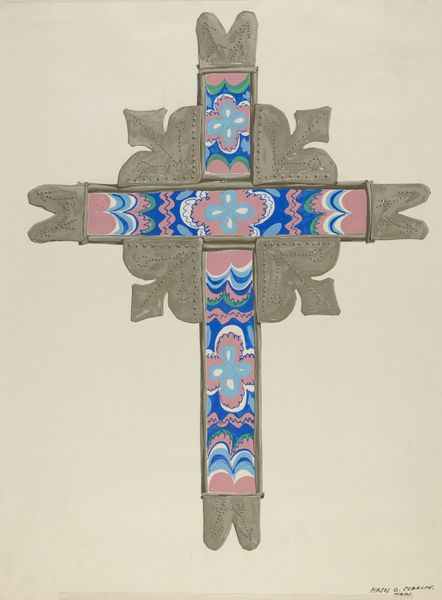
fibre-art, weaving, textile, wool
#
byzantine-art
#
fibre-art
#
weaving
#
textile
#
wool
#
romanesque
#
geometric
#
mixed media
Dimensions: 17.3 × 22.3 cm (6 3/4 × 8 3/4 in.)
Copyright: Public Domain
Editor: This intriguing piece is titled "Cross," created sometime in the 5th or 6th century during the Roman period. It's currently housed at the Art Institute of Chicago and is made from woven wool. I find the visible wear and tear quite moving. How do you see this work, considering its age and materials? Curator: From a materialist perspective, the "Cross" compels us to examine the conditions of its making and use. Consider the labor involved in raising the sheep, processing the wool, creating the dyes, and the intricate weaving itself. What kind of loom was used? Were these goods produced in a workshop or domestically? The survival of this fragment also raises questions about its social context. How did textile production interact with class and religious structures? Was this a grave good or a functional piece, maybe even an object of veneration? Editor: That's a fascinating way to think about it. I hadn't considered the economic implications. It also changes my perspective on what counts as art – moving beyond the idea of “high art”. Is it unusual to see such elaborate work in something meant for everyday use, or for burial? Curator: The line between “high art” and “craft” becomes blurred here. The level of detail does imply value, either monetary or symbolic. It also prompts us to question our modern tendency to categorize and elevate certain objects over others. What value do we place on the handmade now, especially when compared to machine production? How do our own production processes define cultural and class structures? Editor: That's really made me rethink my approach to art history. It's not just about aesthetics or symbolism, but about the entire material life of an object. Curator: Exactly! And in that materiality, there are narratives to be revealed, interrogated, and re-evaluated in how society gives objects value through making and consumption.
Comments
No comments
Be the first to comment and join the conversation on the ultimate creative platform.
